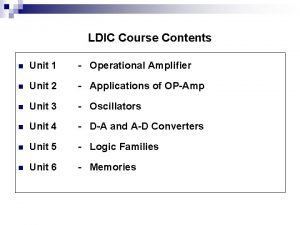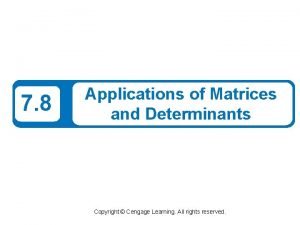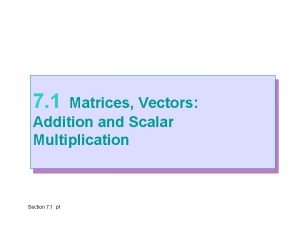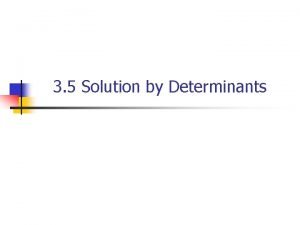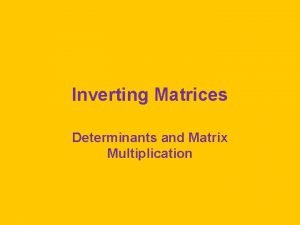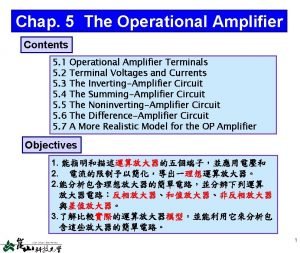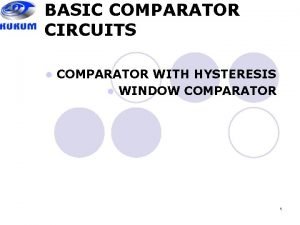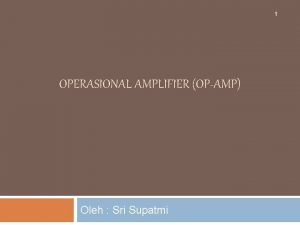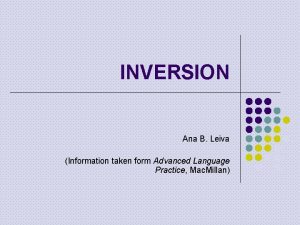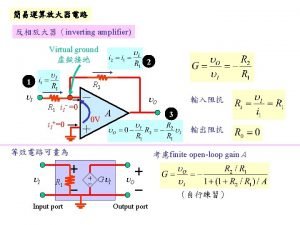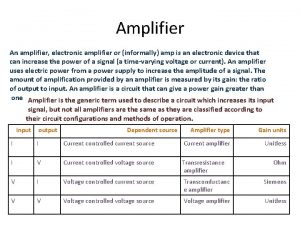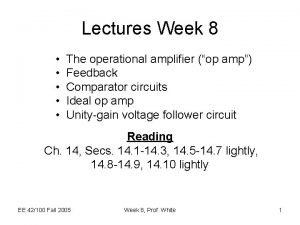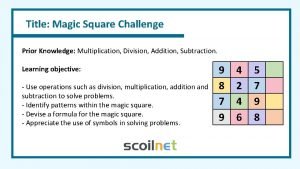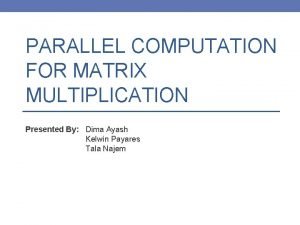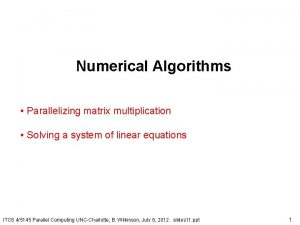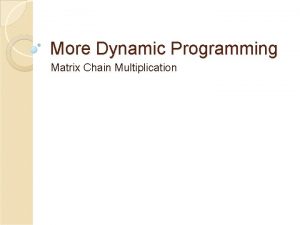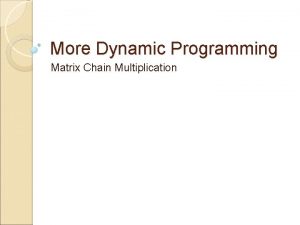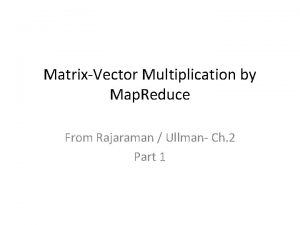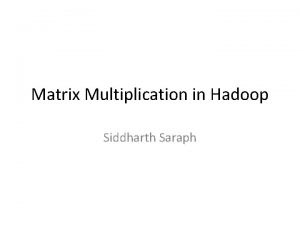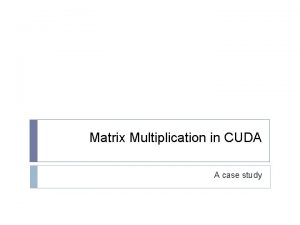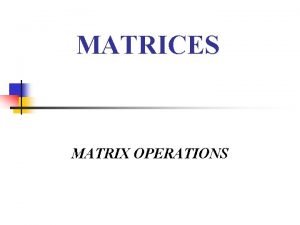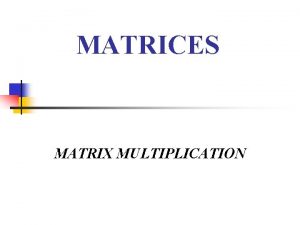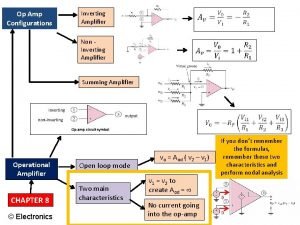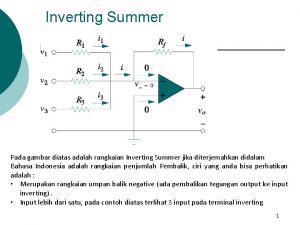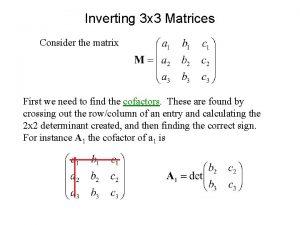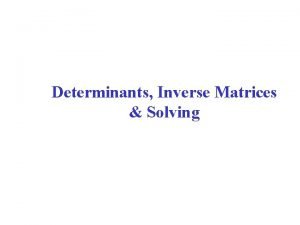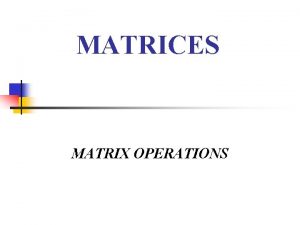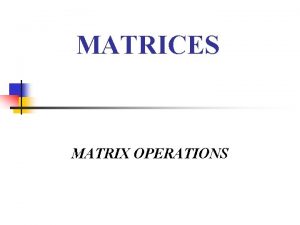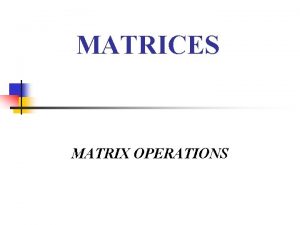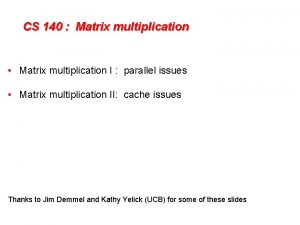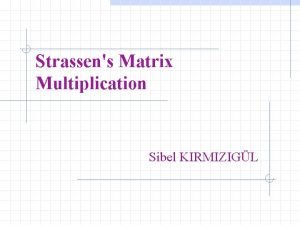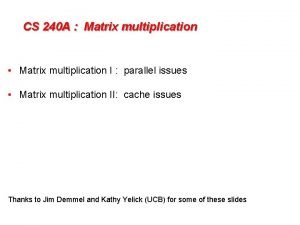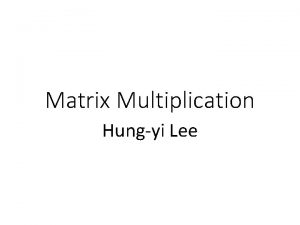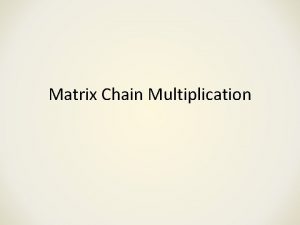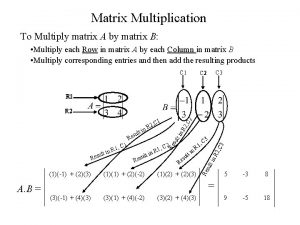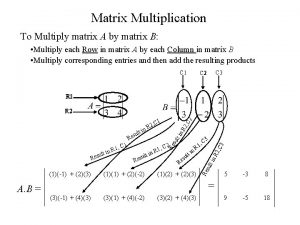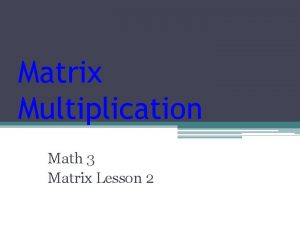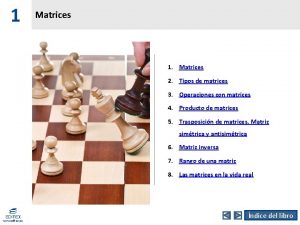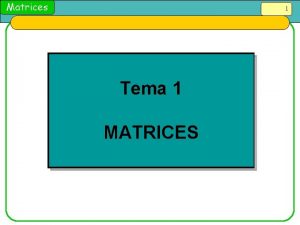Inverting Matrices Determinants and Matrix Multiplication Determinants Square



























- Slides: 27

Inverting Matrices Determinants and Matrix Multiplication

Determinants • Square matrices have determinants, which are useful in other matrix operations, especially inversion. • For a second-order square matrix, A, the determinant is

Consider the following bivariate raw data matrix Subject # 1 2 3 4 5 X 12 18 32 44 49 Y 1 3 2 4 5 from which the following XY variance-covariance matrix is obtained: X Y X 256 21. 5 Y 21. 5 2. 5

Think of the variance-covariance matrix as containing information about the two variables – the more variable X and Y are, the more information you have. Any redundancy between X and Y reduces the total amount of information you have -- to the extent that you have covariance between X and Y, you have less total information.

Generalized Variance • The determinant tells you how much information the matrix has about the variance in the variables – the generalized variance, • after removing redundancy among variables. • We took the product of the variances and then subtracted the product of the covariances (redundancy).

Imagine a Rectangle • Its width represents information on X • Its height represents information on Y • X is perpendicular to Y (orthogonal), thus r. XY = 0. • The area of the rectangle represents the total information on X and Y. • With covariance = 0, the determinant = the product of the two variances minus 0.

Imagine a Parallelogram • Allowing X and Y to be correlated with one another moves the angle between height and width away from 90 degrees. • As the angle moves further and further away from 90 degrees, the area of the parallelogram is also reduced. • Eventually to zero (when X and Y are perfectly correlated).











Consider This Data Matrix Subject # 1 X 10 Y 1 2 20 2 3 30 3 4 40 4 5 50 5 Variance-Covariance Matrix X Y X 250 25 Y 25 2. 5 Since X and Y are perfectly correlated, the generalized variance is nil.

Identity Matrix • An identity matrix has 1’s on its main diagonal, 0’s elsewhere.

Inversion • The inverted matrix is that which when multiplied by A yields the identity matrix. That is, AA 1 = A 1 A = I. • With scalars, multiplication by the inverse yields the scalar identity. • Multiplication by an inverse is like division with scalars.

Inverting a 2 x 2 Matrix • For our original variance/covariance matrix:

Multiplying a Scalar by a Matrix • Simply multiply each matrix element by the scalar (1/177. 75 in this case). • The resulting inverse matrix is:

A A 1 = A 1 A = I

The Determinant of a Third-Order Square Matrix

Matrix Multiplication for a 3 x 3

SAS Will Do It For You • • • Proc IML; reset print; display each matrix when created XY ={ enter the matrix XY 256 21. 5, comma at end of row 21. 5 2. 5}; matrix within { } determinant = det(XY); find determinant inverse = inv(XY); find inverse identity = XY*inverse; multiply by inverse quit;

XY 2 rows 2 cols 256 21. 5 2. 5 DETERMINANT 1 row 1 col 177. 75 INVERSE 2 rows 2 cols 0. 0140647 -0. 120956 -0. 1209560 1. 440225 IDENTITY 2 rows 2 cols 1 -2. 22 E-16 -2. 08 E-17 1
 Thermal voltage drift is defined as *
Thermal voltage drift is defined as * Matrix multiplication definition
Matrix multiplication definition Applications of matrices and determinants
Applications of matrices and determinants Matrices and determinants cengage
Matrices and determinants cengage Transpose of matrix product
Transpose of matrix product Ad to bc
Ad to bc Multiplication of determinants
Multiplication of determinants Inverting op amp gain formula
Inverting op amp gain formula Non inverting amplifier
Non inverting amplifier Window comparator with hysteresis
Window comparator with hysteresis Contoh soal op amp inverting
Contoh soal op amp inverting Inverting ana
Inverting ana Capacitor coupled voltage follower
Capacitor coupled voltage follower Inverting amplifier
Inverting amplifier Non inverting amplifier derivation
Non inverting amplifier derivation Conclusion of inverting amplifier
Conclusion of inverting amplifier Inverting amplifire
Inverting amplifire Apa itu summing amplifier
Apa itu summing amplifier Magic square multiplication
Magic square multiplication Cannon algorithm
Cannon algorithm Matrix multiplication time complexity
Matrix multiplication time complexity Matrix chain multiplication definition
Matrix chain multiplication definition Matrix chain multiplication formula
Matrix chain multiplication formula Matrix vector multiplication by mapreduce
Matrix vector multiplication by mapreduce Hadoop matrix multiplication
Hadoop matrix multiplication Matrix multiplication cuda
Matrix multiplication cuda Matrix multiplication stan
Matrix multiplication stan 2x3 matrix
2x3 matrix
